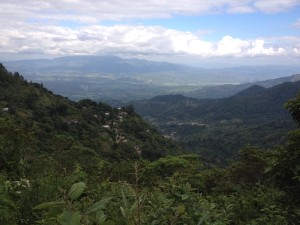
In one of my last posts, I noted that for years, Parties, civil society, and indigenous groups have been working out how to simultaneously protect forests and combat climate change, and that the June 2015 climate negotiations would provide a great opportunity to ensure that rights and ecological integrity were at the forefront of this effort.
Finally, climate negotiators seem to have heard us! Parties to the UN Framework Convention on Climate Change (UNFCCC) were willing to spend their limited negotiating time to work out the final details of the Warsaw Framework for REDD+. Since 2013, CIEL and many of our partners had been vocal advocates for much more work to be done before REDD+ could be considered remotely operational.
As the overarching framework for REDD+, the UNFCCC needed to ensure that the required safeguards would be addressed and respected during REDD+ implementation, and to define and incentivize the non-carbon benefits of REDD+, among other issues.
While for some it felt like a relief to have those final details of the REDD+ wrapped up in Bonn, many forest advocates are calling the decision “skeletal” because so much more work is needed to truly safeguard community rights and prevent future deforestation and forest degradation.

For example, while Parties agreed to further reporting on safeguards (also known as the safeguards information systems or SIS), it is ultimately weak. We had advocated for more guidance on the timing and frequency of reporting on how safeguards are being addressed and respected; however, the draft text only “strongly encourages” that a country’s summary report on its safeguard implementation is comprehensive, consistent, transparent, and effective. Also, critically important was our call for further guidance to ensure participation of relevant stakeholders, particularly women, indigenous peoples, and local communities in the collection, compilation, and provision of information for the summary reports. Unfortunately, the draft conclusions from Bonn do not include the need for such a participatory approach.
On Non-Carbon Benefits, Parties agreed that they completed their consideration of methodological issues simply by reaffirming their importance for the long-term sustainability of REDD+. They did not resolve how to define, incentivize, monitor, or report on non-carbon. They also did not explicitly recognize, respect, and promote community-based monitoring and information systems in a way that ensures respect for indigenous peoples’ traditional knowledge, customary laws, governance, and community-based forest management practices. Instead, Parties clarified that encouraging non-carbon benefits is not required to receive REDD+ support.
 While we now have agreement that the remaining items on REDD+ are now completed, without the desired further guidance for REDD+, civil society, indigenous peoples, local communities and national governments now have their work cut out for them. We hope that the tools we created to ensure the required REDD+ safeguards and rights protections are enforced continue to prove useful to our partners on the ground who will be doing the heavy lifting for years to come.
While we now have agreement that the remaining items on REDD+ are now completed, without the desired further guidance for REDD+, civil society, indigenous peoples, local communities and national governments now have their work cut out for them. We hope that the tools we created to ensure the required REDD+ safeguards and rights protections are enforced continue to prove useful to our partners on the ground who will be doing the heavy lifting for years to come.
With this final REDD+ decision in hand, ensuring that REDD+ actually reduces emissions, does not cause harm to the indigenous peoples and local communities who depend on and protect the forests, AND creates benefits beyond carbon places a substantial burden on those who have already been protecting forests for generations. While we know our partners are up to the task, it is unfortunate that the international community did not give them more support.
Originally posted on July 6, 2015.
